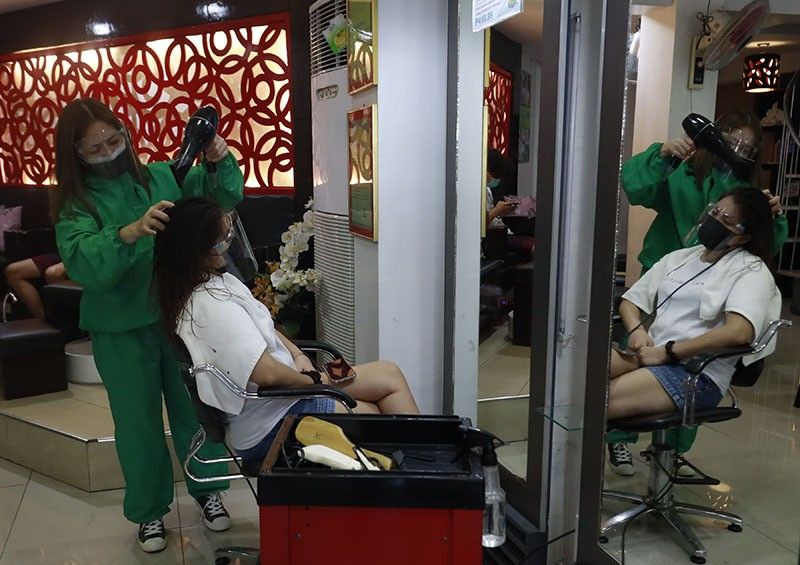NCR Plus reopens further despite high coronavirus positivity rate

MANILA, Philippines — Metro Manila, along with Cavite, Rizal and Bulacan, further reopened Saturday despite the positivity rate in the capital region hovering way above the recommendation set by the World Health Organization for economic reopening.
The positivity rate in Metro Manila stands at 12%, according to the independent OCTA Research. In contrast, the WHO recommends that the positivity rate should remain at 5% or lower for at least 14 days for a safe reopening.
Department of Health spokesperson Maria Rosario Vergeire told state television that they based their recommendation to ease coronavirus curbs in Metro Manila and nearby provinces on the average daily attack rate, the transmission rate and two-week growth rate, which she said have all decreased.
She did not mention, however, whether they also considered the positivity rate in their decision to ease restrictions in Metro Manila and nearby provinces as they have done in the past.
Other indicators
Aside from the positivity rate, other indicators which gauge the status of the coronavirus pandemic in the country are improving.
For one, the average new COVID-19 cases per day in Metro Manila has decreased by 30% to just 1,644 new infections over the past week, according to OCTA Research.
The research group also noted that the reproduction number, or the estimated number of people who would be infected by a person with the coronavirus, in Metro Manila decreased to 0.57.
It also found that the average daily attack rate, or the percentage of a population that gets infected with the disease, decreased to below 12 infections for every 100,000 people.
The cities of Navotas, Malabon, Manila and Caloocan, it added, can now be classified as moderate risk areas as their average daily attack rates have fallen below 10 infections for every 100,000 people.
‘Heightened restrictions’
Stringent restrictions have also not yet been abandoned despite Metro Manila and nearby provinces shifting to the laxer general community quarantine, with “heightened” curbs in place, including the barring of non-essential travel to and from the region.
For the DOH, the goal now is even if the region has shifted to GCQ is for local governments to ramp up their response to the pandemic by reducing the time between detection and isolation of patients from nine to 11 days to 5.5 days.
“Kung magagawa natin ‘yan, mapapababa natin ang mga kaso by as much as two-thirds. It does not matter kung naka-GCQ tayo, basta ma-shorten natin ‘yong period between detection and isolation, we would be able to reduce the number of cases in the country,” Vergeire said.
(If we were able to do that, we could cut cases by as much as two-thirds. It does not matter if we are under GCQ, as long as we shorten the period between detection and isolation, we would be able to reduce the number of cases in the country.)
- Latest
- Trending




























